March 14, 2022
The (non-related) hosts of Let’s Hear It, Eric Brown and Kirk Brown, recently invited me to sit down and discuss my road to philanthropy and the changes the Stupski Foundation hopes to see take root to make philanthropy more equitable and impactful. I was grateful for the opportunity to join the podcast, which in the past three years has become an important venue for dialogue about smart ideas for improving the philanthropic and nonprofit sectors. For me, having spent time in my early career as an on-air host for Working Assets Broadcasting, the interview was also a welcome return to my roots in talk radio.
We had an interesting and wide-ranging conversation, and I had the chance to touch on a few themes I find particularly relevant for the foundation sector today. Although I hope you’ll listen to the full episode, I’m sharing below some of the highlights from our discussion.
The benefits of spending down
During our conversation, Eric asked me if there was any reason for a foundation to exist in perpetuity. I honestly couldn’t come up with one. As Stupski draws closer to fulfilling our commitment to distribute all our assets, I wish more philanthropic institutions would consider a spend-down strategy to meet the needs we see all around us – as we often say at Stupski, because change can’t wait.
The racial wealth gap is extreme and ever-widening, while the assets foundations hold are massive and increasing exponentially. Holding back resources that could address today’s challenges in order to preserve funds for some undefined future problem is nonsensical. The need is immediate and dire, and the philanthropic sector can boldly meet this moment – even if that means foundations spend themselves out of existence.
There’s no one set timeline or approach for how to do this. Foundation strategies and input from community partners should guide how, and for how long, to commit funds.
Taking a close look at our endowments
Eric and I discussed the importance of being self critical, especially as a funder. As part of that, I’m particularly focused on how foundations invest their money, and the challenges we can create for ourselves in seeking maximum returns. It’s not often talked about, but foundation endowments can work in concert or at odds with their values. That is one of the reasons I advocate for spending down, so that funders don’t have to balance competing interests of making money in order to give money away. But even as we spend down at Stupski, we’re having ongoing conversations about how to divest our endowment from institutions perpetuating the same harms we’re working to address. As funders, we must ask ourselves hard questions and make sure we’re using our assets strategically, ethically, and fully to solve the world’s biggest challenges.
When is philanthropy at its best?
Philanthropy excels when it uses its financial power to pilot innovative solutions that the public sector can then adopt and scale. In other words, we can use our dollars to innovate on behalf of the government, so they can take up the effective solutions we find without taking on the risk.
It is essential for philanthropy to play this role, because foundation assets are, by and large, made up of taxpayer dollars. Foundations should seek to make better use of those funds than the government can, and they are perfectly positioned to do so. They have the ability to support partners that pilot solutions that work, or perhaps more importantly, don’t work, faster and cheaper than it would take for the government to pilot new programs. If we can’t do that, we shouldn’t be in the philanthropy business. As foundations spend what is essentially the American people’s money, we should always aim to create greater impact with fewer dollars than the government; essentially, we need to try to beat public sector returns and share what we learn so that others can scale up wins and avoid failures.
As we do our part to create a more equitable future, foundations have the opportunity to invest in and provide economic power to communities–especially communities of color that have been subject to centuries of disinvestment–that the government can then pick up. That is how we begin to repair the broken social contract between communities of color and the public and private sector institutions that too often perpetuate discriminatory systems and structures .
A call to the next generation of philanthropic leaders
Eric asked me what I tell young people getting into this field. For them, I have a simple message to share: We need you. It’s crucial for this incoming generation to have a seat at the table from which they can hold philanthropic institutions accountable to the communities those institutions serve. It is young people, those with lived experience and a wide-open perspective on what’s possible, who must lead our foundations into the future. Only then can we truly move the sector forward.
I love Stupski’s new internship program. It has offered me a front-row seat to the power of bringing young people’s voices into the conversation. From Jodi Go, whose bold op-ed called on foundations to do more to support youth, to Diego Villegas, whose “Amplifying Persistence” podcast created a living archive of student voices, Stupski’s interns have made a lasting impact on the way the Foundation approaches its work. (And I am incredibly grateful to Jen Nguyen and Malila Becton-Consuegra on our Postsecondary Success team for making possible this program that the Foundation is benefitting from in countless ways.)
I encourage other foundations, if they aren’t already, to use paid internship programs and other avenues to help build the pipeline of diverse philanthropic talent. By developing these youth leaders, we are also developing a critical feedback loop from the communities we seek to serve that will strengthen the sector and make our philanthropy more effective.
I want to give a big thank you to Eric and Kirk for inviting me on the podcast. I hope other foundation leaders will join “Let’s Hear It” to continue exploring these topics and others to help make philanthropy more equitable and impactful.


